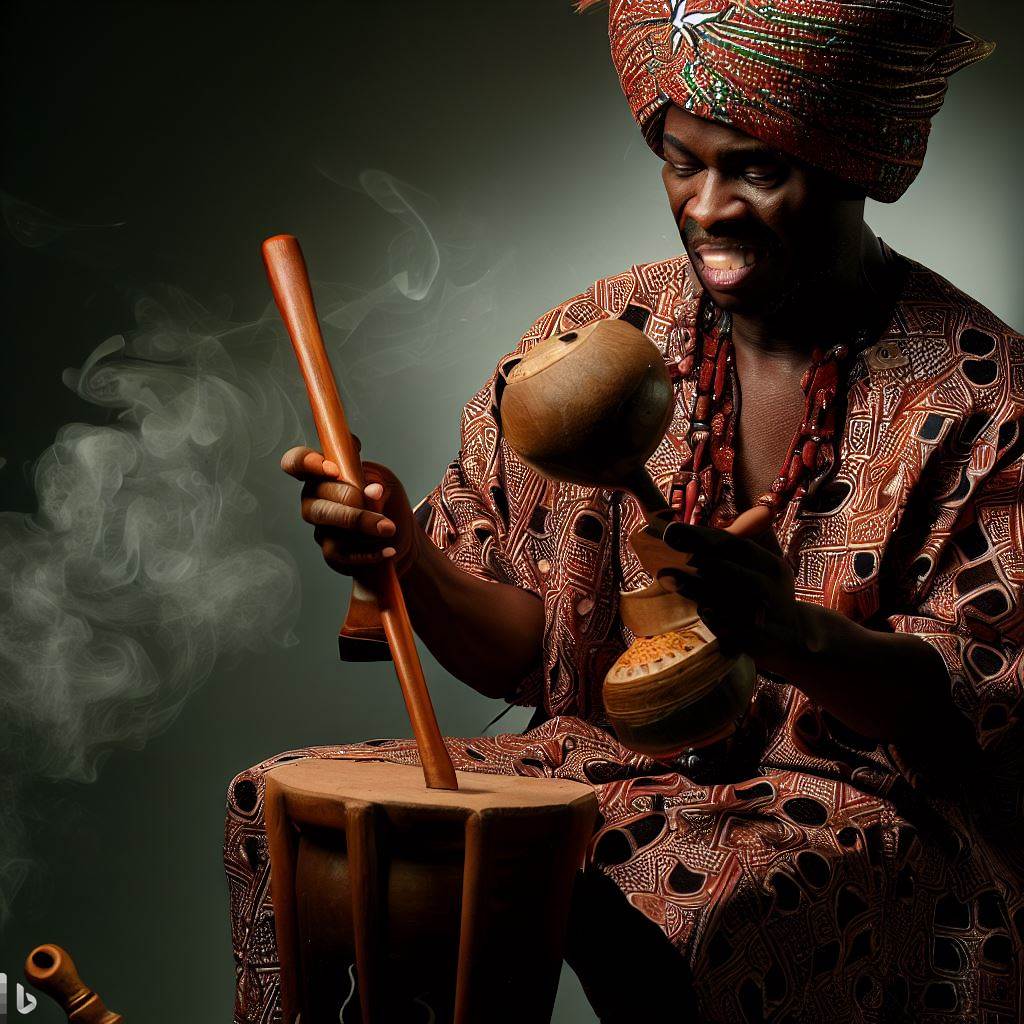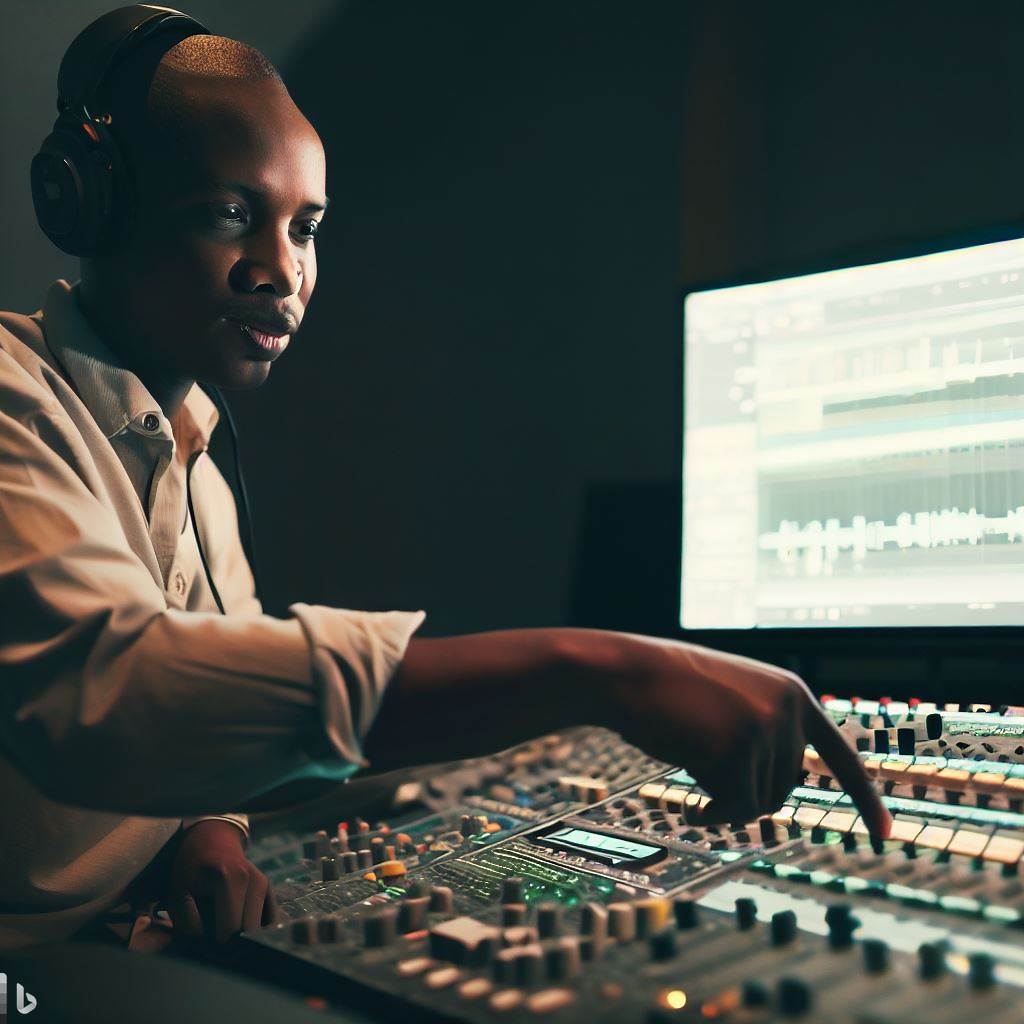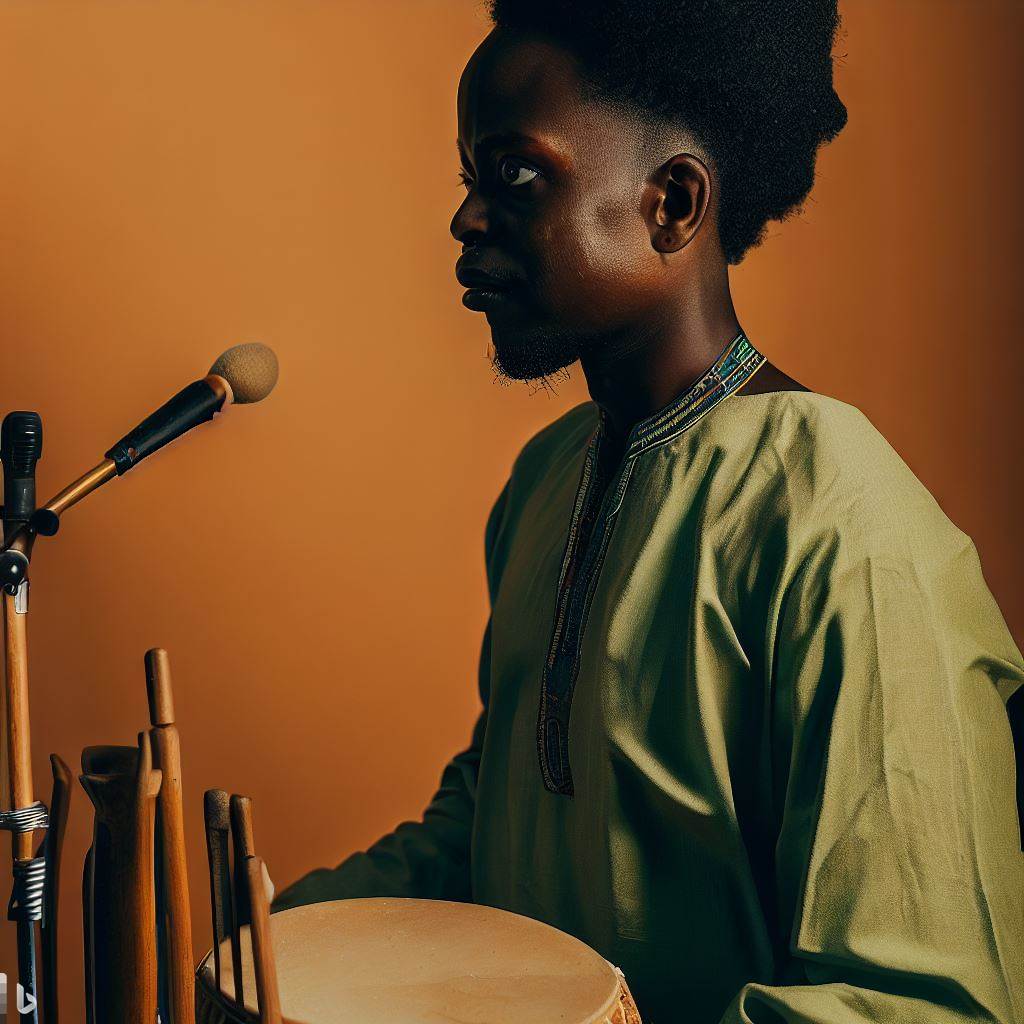Introduction
Nigeria, a country in West Africa, is known for its vibrant and diverse culture. With over 250 ethnic groups and numerous languages, Nigeria offers a wide range of cultural practices, traditions, and customs.
From music and dance to food and clothing, Nigerian culture is a tapestry of unique heritage.
Foley artistry, on the other hand, is a crucial aspect of audio post-production in the entertainment industry. It involves the creation and manipulation of sound effects to enhance the visual experience for viewers.
Foley artists use various objects and techniques to reproduce everyday sounds, such as footsteps, door creaks, or even the rustling of clothes.
Analyzing the impact of Nigerian culture on foley artistry is essential for several reasons. Firstly, it allows for the exploration of cultural representation in sound design.
By incorporating Nigerian sounds and traditions into foley artistry, the industry can create a more immersive and authentic experience for audiences.
Moreover, studying the impact of Nigerian culture on foley artistry enables creative collaborations and cultural exchange.
Foley artists can draw inspiration from Nigerian music, folklore, or indigenous instruments to create unique soundscapes.
This not only showcases the richness of Nigerian culture but also fosters cross-cultural understanding and appreciation.
Overall, understanding the influence of Nigerian culture on foley artistry is crucial for promoting cultural diversity and creativity in the entertainment industry.
By incorporating Nigerian elements in sound design, filmmakers and theater artists can create a more inclusive and engaging experience for viewers worldwide.
Overview of Foley Artistry
Definition and history of foley artistry
- Foley artistry, also known as sound effects production, is the process of adding audio effects to visual media.
- It originated in the early days of cinema when sounds had to be manually created and synchronized with the on-screen action.
Role of foley artists in film and television production
- Foley artists are skilled professionals responsible for creating and recording sounds that enhance the realism and impact of a scene.
- They use various tools and techniques to produce a wide range of sounds, including footsteps, clothing rustles, and object movements.
- These sounds are meticulously synchronized with the visuals to create a cohesive and immersive audiovisual experience.
Importance of Foley artistry in enhancing auditory experiences
- Foley’s artistry plays a vital role in film and television production by enriching the auditory dimension of storytelling.
- By carefully crafting and integrating sound effects, foley artists enhance the realism and emotional impact of a scene.
- Audiences are more likely to engage with a story when the audio cues align with the visuals, creating a seamless and immersive experience.
Read: Essential Skills for a Successful Animation Director
Nigerian Culture and its Influence on Foley Artistry
Traditional Nigerian Music: Instruments and Foley Artistry
Traditional Nigerian music is a tapestry of rhythms, melodies, and instruments, each contributing uniquely to foley artistry. The array of instruments, like the talking drum and agidigbo, hold a rhythmic treasure trove.
- Analysis of Instruments: Rhythmic Wonders: The talking drum mimics human speech, offering a vast range of vocal-like sounds. The agidigbo, with its deep resonance, adds gravity to foley effects.
- Instrumental Contributions to Foley: Foley artists draw from the drum’s tonal variations and agidigbo’s resonance to create rich soundscapes, enhancing auditory experiences.
Nigerian Folklore: Storytelling’s Echo
Nigerian folklore weaves tales through generations, imprinting culture deeply. These stories are more than narratives; they’re echoes of a people’s soul.
- Folklore’s Cultural Significance: Folklore reflects societal values, traditions, and wisdom. It’s a mirror that reflects the Nigerian identity and its diverse facets.
- Storytelling’s Foley Impact: Foley artists embody folklore’s essence by infusing sounds that resonate with ancestral stories, heightening emotional connections for audiences.
Traditional Nigerian Dances: Movement’s Sonic Stamp
Traditional Nigerian dances, vibrant and expressive, leave an indelible imprint on foley artistry, forming a symbiotic relationship.
Transform Your Career in Nigeria
Discover unmatched expertise with our personalized Career Consulting service. Navigate Nigeria’s job market with a strategy tailored just for you.
Get Started- Dance Forms: Expressive Palette: From the energetic “Bata” to the graceful “Yoruba gelede,” each dance form offers a palette of movements, each with a distinct sonic signature.
- Movement’s Influence on Foley: Foley artists translate dance moves into auditory magic – the swish of fabric, stomp of feet – bridging the gap between motion and sound.
In essence, Nigerian culture infuses foley artistry with a symphony of elements – instruments, folklore, and movement – each contributing a unique note to the auditory storytelling experience.
Examples of Nigerian Cultural Elements in Foley Artistry
Analysis of specific Nigerian films utilizing Foley artistry
- The analysis of Nigerian films like “The Wedding Party” reveals the extensive use of foley artistry.
- Foley artists in Nigerian cinema meticulously recreate sounds to enhance storytelling and immerse audiences.
- The incorporation of foley artistry in Nigerian films showcases the influence of Nigerian culture.
- In movies like “Lionheart,” Foley’s artistry brings to life the unique sounds of Nigerian surroundings.
The integration of Nigerian cultural sounds in sound effects
- Nigerian sound effects often incorporate traditional instrument sounds, such as talking drums or shekere.
- Traditional Nigerian instruments add an authentic and culturally rich layer to soundtracks.
- The use of Nigerian dialects and language in voiceovers contributes to the cultural immersion of Nigerian films.
- Nigerian films often emphasize local languages like Yoruba, Igbo, or Hausa through foley artistry.
Nigerian culture significantly impacts foley artistry in Nigerian films.
Through the analysis of specific Nigerian films utilizing foley artistry, we can observe the careful attention to detail and the use of foley to bring out the essence of Nigerian surroundings.
Furthermore, the integration of Nigerian cultural sounds in sound effects adds an authentic and immersive experience for viewers.
The inclusion of traditional instrument sounds and the use of Nigerian dialects and languages in voiceovers further highlight the influence of Nigerian culture in foley artistry.
Overall, Nigerian films have successfully utilized foley artistry to showcase the richness and diversity of Nigerian culture.
Read: Market Demand for Sound Effects Editors in Nigeria
Benefits of Infusing Nigerian Culture into Foley Artistry
As discussed in the previous sections, Nigerian culture has a profound impact on Foley artistry.
In this section , we will explore the various benefits of infusing Nigerian culture into this art form.
Preservation and promotion of Nigerian cultural heritage
By incorporating elements of Nigerian culture into Foley artistry, artists play a crucial role in preserving and promoting the country’s rich heritage.
The use of traditional sounds, such as drum beats, chants, and indigenous musical instruments, allows for the preservation of cultural practices that might otherwise be forgotten.
Furthermore, by showcasing Nigerian cultural heritage through Foley artistry, artists create awareness and generate interest in the country’s traditions.
This can encourage younger generations to explore and appreciate their own cultural roots, fostering a sense of pride and identity.
Enhanced authenticity and richness in sound production
One of the main benefits of infusing Nigerian culture into Foley artistry is the heightened authenticity and richness in sound production.
Nigerian culture is known for its vibrant, diverse, and unique soundscape, which can add depth and character to any audiovisual production.
By incorporating traditional Nigerian sounds into Foley artistry, artists create a more immersive and authentic auditory experience for the audience.
Whether it’s the sound of a talking drum, the rhythmic clapping during a traditional dance, or the melodic tunes of a local instrument, these elements enhance the overall sound design and make it more culturally specific.
Expansion of audience’s cultural awareness and appreciation
Infusing Nigerian culture into Foley artistry also offers the opportunity to expand the audience’s cultural awareness and appreciation.
By including Nigerian elements in films, television shows, or video games, creators expose viewers to a different cultural perspective and broaden their horizons.
Experiencing Nigerian sounds and cultural references encourages viewers to learn more about the country’s history, traditions, and customs.
This creates a more informed and culturally sensitive audience and fosters cross-cultural understanding and appreciation.
Additionally, by diversifying the sound palette and introducing Nigerian cultural elements, Foley artists cater to a wider audience.
People who identify with Nigerian culture or have an interest in it will be drawn to productions that incorporate their cultural heritage, creating a dedicated fan base and increasing viewership or listenership.
The benefits of infusing Nigerian culture into Foley artistry are manifold.
Publish Your Professional Profile, Business or Brand
Showcase your expertise, gain trust, and boost visibility instantly on Professions.ng.
Publish NowBy preserving and promoting Nigerian cultural heritage, enhancing authenticity in sound production, and expanding cultural awareness and appreciation, artists contribute to the richness and diversity of the artistic landscape.
As the world becomes more interconnected, embracing and celebrating cultural differences through art becomes essential, and Foley artistry serves as a powerful medium for this purpose.
Read: Inside the Life of a Nigerian Foley Artist: A Day in Detail

Challenges in Incorporating Nigerian Culture into Foley Artistry
Lack of appreciation and understanding of Nigerian cultural nuances
- Many Foley artists may not have a deep understanding of Nigerian culture and its unique nuances.
- Without this understanding, they may struggle to accurately represent the cultural sounds in their work.
- The lack of appreciation for Nigerian culture can lead to inaccurate and misinterpreted sound effects.
Technical difficulties in capturing and reproducing specific sounds
- Nigerian culture is rich in diverse sounds, from traditional music to unique environmental noises.
- Capturing these sounds can be challenging due to a lack of access to appropriate recording equipment.
- Foley artists often have limited resources and may struggle to recreate Nigerian sounds authentically.
Balancing cultural authenticity with global appeal
- While incorporating Nigerian culture into Foley artistry is important, it must also appeal to a global audience.
- Striking a balance between cultural authenticity and universal understanding can be difficult.
- Some sounds from Nigerian culture may be unfamiliar to international viewers, impacting their reception of the artistry.
Incorporating Nigerian culture into Foley artistry poses several challenges that require careful consideration and creative solutions.
The lack of appreciation and understanding of Nigerian cultural nuances is a significant obstacle for Foley artists.
Without a deep understanding of the culture, they may struggle to accurately represent Nigerian sounds, leading to misinterpretations and inaccuracies in their work.
Another challenge lies in the technical aspects of capturing and reproducing specific sounds. Nigerian culture is diverse, with a wide range of sounds that need to be faithfully recreated.
However, Foley artists often face constraints in terms of access to appropriate recording equipment and resources.
This limits their ability to authentically capture and reproduce Nigerian sounds, hindering their artistic expression.
Furthermore, there is a need to balance cultural authenticity with global appeal. While embracing Nigerian culture in Foley artistry is crucial, it is also important to make the art form accessible to a global audience.
Striking this balance can be challenging, as some sounds from Nigerian culture may be unfamiliar to international viewers.
The challenge lies in ensuring that the incorporation of Nigerian culture does not alienate or confuse the audience, maintaining their engagement and appreciation of the art form.
To overcome these challenges, Foley artists can benefit from cultural immersion and collaboration with individuals familiar with Nigerian culture.
By educating themselves and seeking guidance from experts, they can gain a deeper understanding of the cultural nuances and ensure accurate representation in their work.
Additionally, exploring new recording techniques and investing in quality equipment can help overcome technical difficulties and improve sound reproduction.
The incorporation of Nigerian culture into Foley artistry faces challenges related to the lack of appreciation and understanding of cultural nuances, technical difficulties in capturing specific sounds, and balancing cultural authenticity with global appeal.
Read: Behind the Scenes: The Role of an Animation Director
Conclusion
Recap of the impact of Nigerian culture on foley artistry
In this blog post, we have explored the profound influence of Nigerian culture on the art of foley.
Through detailed analysis, we have seen how Nigerian traditions, music, and folklore have shaped foley artistry, adding unique elements and enriching the creative process.
Importance of cultural diversity in creative industries
It is evident that cultural diversity plays a crucial role in the development of creative industries such as foley artistry.
The integration of different cultural perspectives fosters innovation, expands artistic horizons, and creates more inclusive and immersive experiences for audiences.
Encouragement to explore and collaborate with different cultures in foley artistry
As artists and foley practitioners, it is essential to actively seek out and embrace cultural diversity.
Engaging with different traditions, languages, and musical styles not only broadens our artistic palette but also allows us to connect with a wider range of audiences and create more authentic and meaningful audio experiences.
Nigerian culture has significantly impacted foley artistry, highlighting the power of cultural influences in shaping creative industries.
Embracing cultural diversity and embracing collaboration across cultures can open up new creative possibilities and ultimately enhance the art of foley.




